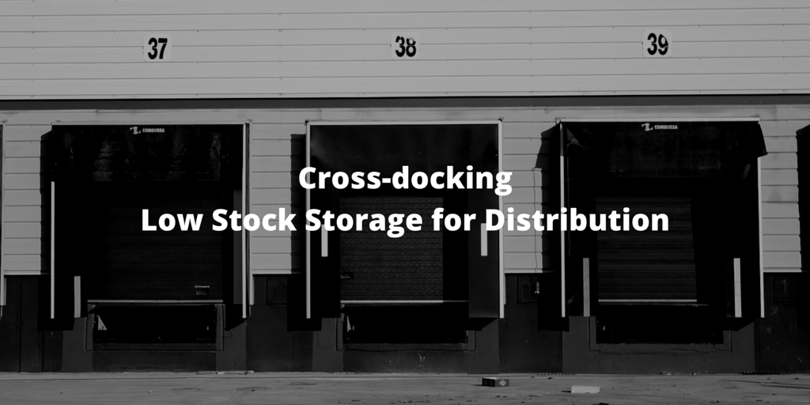
Cross-docking is a warehouse activity, a transfer of goods from trucks that come from a distribution center (from manufacturers in most cases) onto trucks that go to the final customers. Cross-docking means reducing or partially removing the storage activity, reducing the stock activities (inventory, putaway, transfer, etc) and, finally, the costs.
Cross-docking is being used in order to decrease the time of storage by boosting the circuit between the distributors and the manufacturers, but also to reduce the cost of storage, handling and transport. Therefore, cross-docking is one of the most commonly used systems to reduce the logistics costs.
How does Cross-docking work for Distribution Companies?
Suppose a distribution company in Romania makes 3 orders to 3 different suppliers or manufacturers: Supplier A from UK, Supplier B from Spain and Supplier C from France. Each of these suppliers have different delivery times and costs. So, how can the distribution company lower the freight costs? He demands 3 deliveries at a cross-dock center in Germany and from there it will leave a consolidated order. Instead of having 3 dedicated shipments (UK - Romania, France - Romania and Spain - Romania), the distribution company will have just one consolidated shipment from Germany to Romania at a much lower cost.

What are the advantages of cross-docking?
Cross-docking is an interesting method since it allows the identification of losses associated with holding inventories and reducing their maintenance costs. Customers with large and stable order flow are using this method to replace, in fact, stocks with information and coordination.
For other customers with smaller loads (LTL or Less-Than-Truckload) and more frequent transports, cross-docking is a method of reducing transport costs. For them cross-docking is a way to get supplies consolidated into a single transport.
Who can use cross-docking?
Cross-docking is a way to reduce logistics costs by companies in industries such as distribution, manufacturing, retail and transport.
For companies in distribution, cross-docking involves consolidating incoming products from different suppliers for the same client onto a single transport unit, which will be delivered as soon as the final product is received.
Manufacturing companies can take advantage of cross-docking site, reducing the number of LTL dedicated transports (Less than truckload).
Shipping companies can aggregate supplies from various actors in LTL and parcel industry.
For retailers, cross-docking involves receiving products from multiple vendors and sorting them into deliveries that go to shops.
In order to use cross-docking to be more efficient with your resources, you need a flexible and intelligent integrated management system for distribution able to integrate the software solutions used by suppliers, distributors or transporters.



